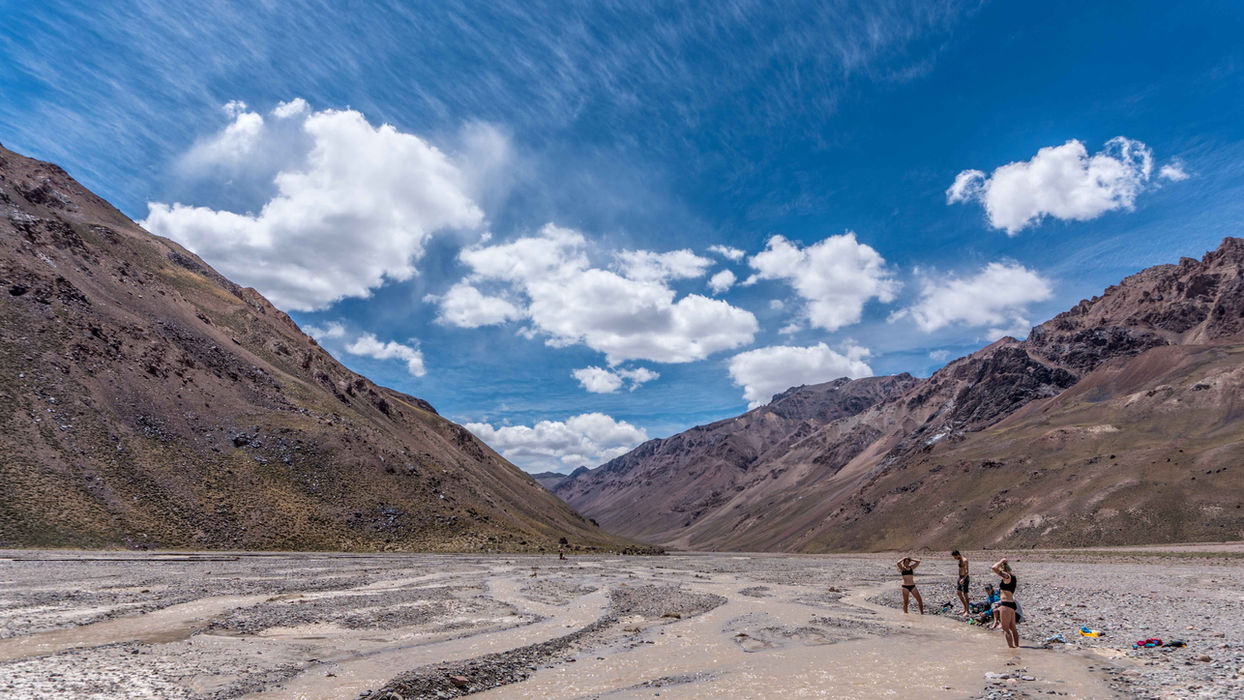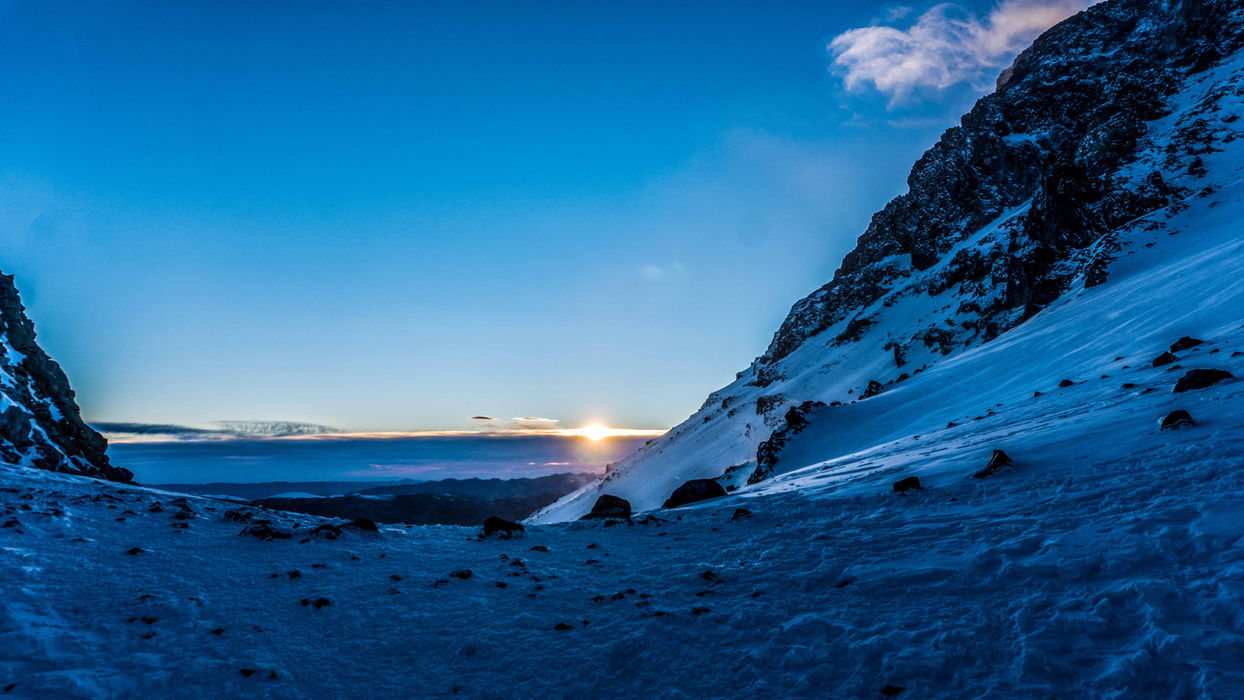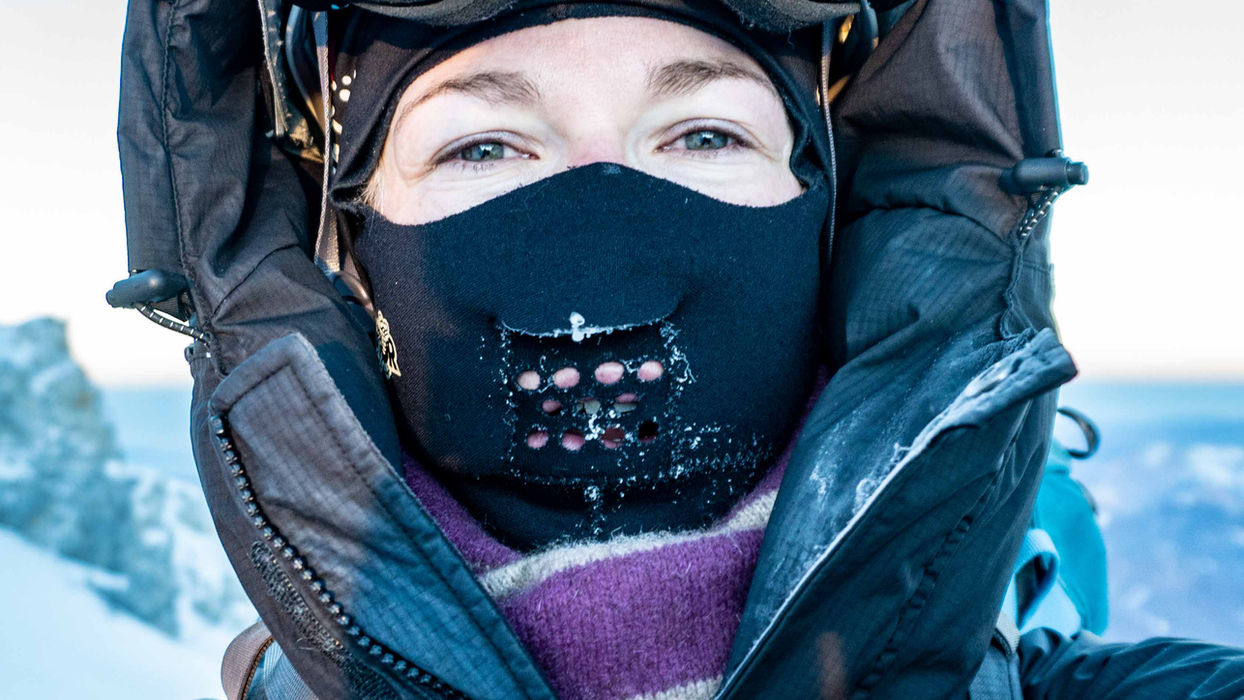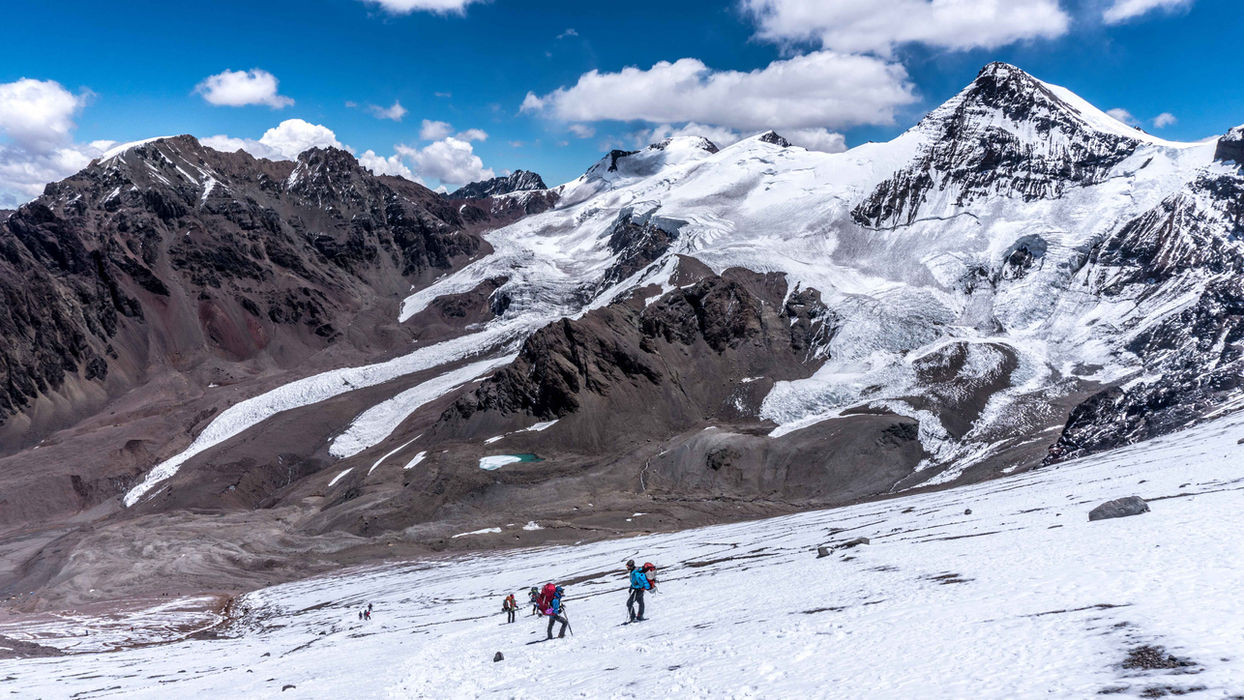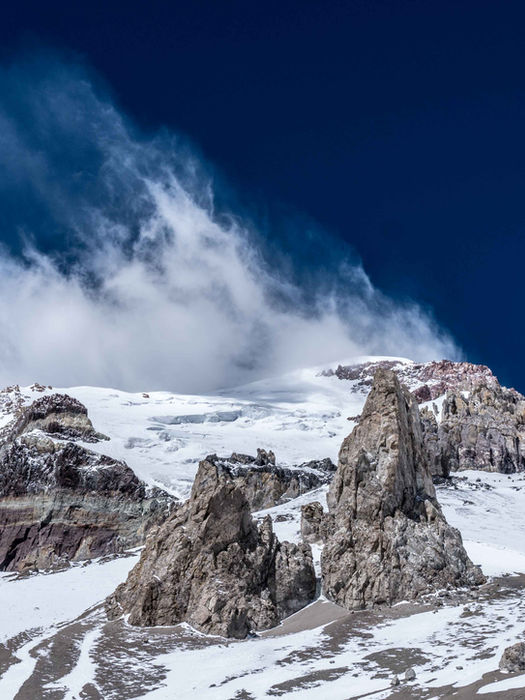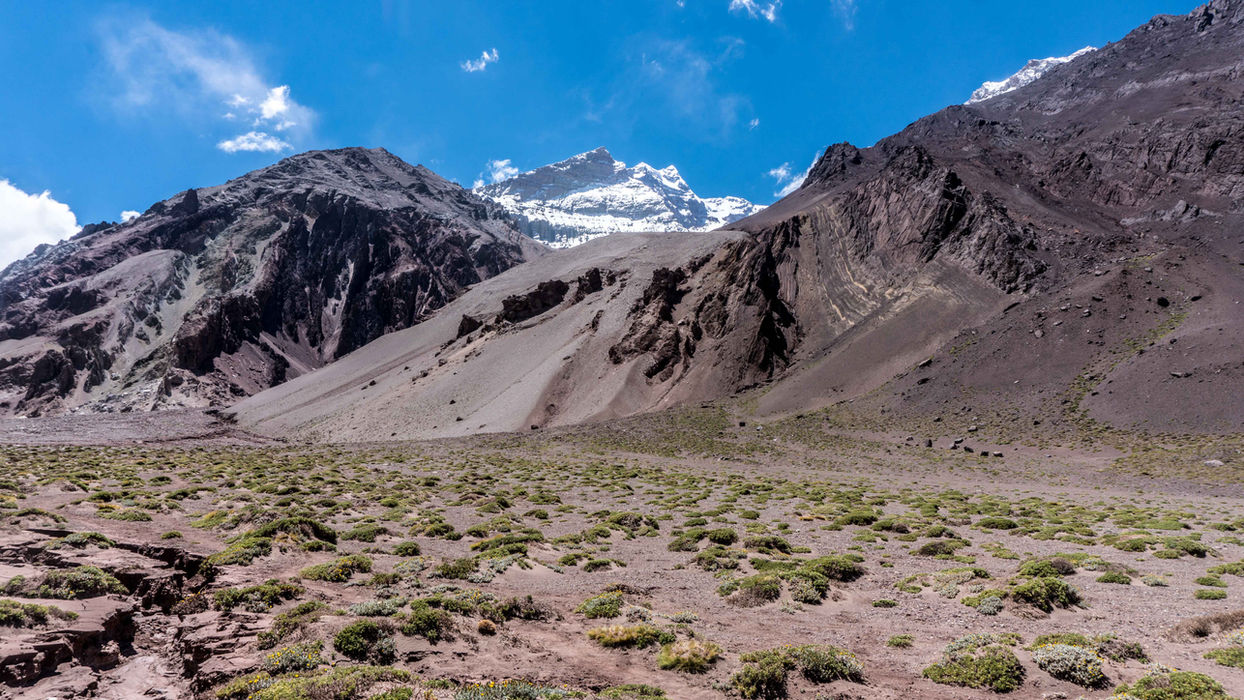
The Sentinel of Stone
ACONCAGUA 2019

INTRODUCTION
Discover the expedition
ACONCAGUA 2019
A NEW BEGINNING
In 2018, I embarked on a new chapter, stepping out of academia after spending two years completing a post-doc at the University of St Andrews in Scotland. My work had turned into a routine office job, and I found myself yearning for the thrill of glaciers, expeditions, and high mountains. This led to the idea of organizing a trip to Aconcagua. I was seeking a challenge at high altitude without the technical concerns. Aconcagua, the "sentinel of stone" in Quechua Ackon Cahuak, is known as the "highest walk in the world." I reached out to my friend Anne, who had also earned her PhD in Svalbard, to join me. Anne got in touch with Dorotha, Dorotha contacted Inge, and suddenly my brother wanted to join, along with his friends. What started as a small team quickly turned into a group of 9 people—though 9 of the nicest, most enthusiastic individuals I know, promising a fun-filled trip. After months of preparation, we found ourselves in beautiful Mendoza, Argentina, ready to take on our biggest challenge yet.
Aconcagua offers various climbing routes, and we opted for one of the less technical ones—the 360-fake Polish glacier route, a 19-day adventure circling the mountain, ascending on the Polish glacier side, and descending the normal route. This allowed us to see more of the mountain, avoid the crowds, and experience a different ascent and descent. Of course, this choice came with its challenges; the route had fewer resources and medical assistance than the normal route, requiring us to reach camp 3 at 6000 m before returning to the normal base camp.
For our first time on the mountain, we decided to go with local guides from a company I won't mention—reasons to be revealed later. For the initial part of the trip, from the park entrance to base camp, we had one guide, mules, and carried our own food. From base camp onward, we utilized the company's services, with three guides organizing camps and food. On January 9, 2018, we left Mendoza to meet our first guide at Los Puquios, near Los Penitentes. The bus journey was surreal; the mountains loomed large, and the landscape looked dry as we delved into the heart of the adventure.
The first three days were a test. Our guide was eager to propel us from point A to B at lightning speed, ensuring we always reached camp super early. This provided plenty of time to rest, eat, and explore our surroundings. Allow me to introduce my friends: Anna Elina, Aurélie, Dorota, Niels, Inge, Jerem, Nathalie, and Mael!
BASE CAMP LIFE
Arriving at Plaza Argentina was a moment of pride for all of us. We were already at 4200 m, but the summit at 6962 m still lay ahead! The primary goal now was to rest, hydrate, eat, and rest some more—a task easier said than done. We had a checklist of things to tackle, starting with a mandatory medical examination to measure our blood oxygen saturation. The doctor had the authority to compel us to descend if our results weren't up to par. This added a bit of stress, and the prospect of giving up on the climb likely raised the blood pressure of some. Out of the nine of us, four had results below expectations, but thankfully the doctor granted them a second chance with another test two days later. Oxygen saturation is a critical metric at this altitude, with values below 80% indicating incomplete acclimatization. It varies from person to person, increasing the risk of acute mountain sickness during further ascents.
Equipment management was another task. We had to part with all the light and hot-weather gear, which would be transferred to the main base camp on the opposite side of the mountain. From this point on, we'd be responsible for carrying almost all our gear ourselves, with only the tents being transported by robust porters. We contemplated hiring additional porters, but the cost was a bit steep for us.
Base camp had a fantastic atmosphere. Showers, WiFi, and "real" toilets provided a touch of luxury. While others enjoyed these amenities, I was more inclined to explore the surroundings. Positioned on a debris-covered glacier with penitentes not too far away and climbable boulders, the base camp surroundings fascinated me. However, time flew as we were having fun, and soon it was time to embark on our rotations.
Rotations proved to be the optimal method for acclimatization, involving climbing high and sleeping low. We started by moving equipment and food to Camp 1 (around 5000 m) and immediately descended to sleep at base camp. After a rest day, we repeated the process, moving everything to Camp 1. The first rotation always presented its challenges, but the second one, as they say, was a walk in the park.
HIGH ALTITUDE CAMPS
The excitement was palpable as we geared up to conquer the higher camps. The path led us through narrow couloirs with the potential for rockfalls, prompting the use of helmets. We initially enjoyed decent weather, but it quickly took a turn for the worse, escalating into a full-blown storm. For many of us, it was the first time at 5000 m, not the ideal conditions to feel confident about acclimatization. We swiftly buried our equipment, hoping to recover it in a couple of days, and raced back down to base camp in record time.
The following day, our last full day at base camp, those who had initially failed the medical assessment gave it another shot—and all passed! It was a massive relief for everyone; no one wanted to face another three days of walking back to the park entrance alone. The day after, we finally moved to Camp 1, this time under much better conditions. We could finally see our path, appreciating the stunning, desolate landscape of Aconcagua. The camp, albeit small and densely packed, was surrounded by my favorite feature—penitentes. We were ecstatic to have made it there.
Yet, there's no time to linger on Aconcagua. The next day, we commenced our rotation to Camp 2, transporting as much gear as possible. Camp 2 sits at 5500 m—not significantly higher, but at this altitude, every additional meter is a challenge. The initial stretch was a bit steep, followed by a long traverse to a small platform where Camp 2 was nestled. The walk was breathtaking; above the clouds, it felt like we were in paradise.
THE APPROACH
Navigating such a sizable group isn't easy—some want to rush to camp, others prefer taking pictures, and there's always someone with uncomfortable shoes. However, I couldn't have been happier to be back with my friends and brother, ready for the adventure of a lifetime. What better place to catch up than on the trails of Aconcagua?
These initial days posed a challenge for us polar folks; temperatures soared, the trails were excessively dusty, and when your eyes weren't bothered, the flies were ready for a feasting session at camp. Despite the hardships, the landscape transformed rapidly. We traversed long valleys, crossed a few rivers (much easier than anticipated), yet the mountain remained elusive. I was pleased with our decision to avoid the normal route; this area felt serene and untouched. Camp 1, Pampa de Lenas, and Camp 2, Casa de Piedra, offered opportunities to dip our feet in the rivers and daydream while watching clouds drift by. As the altitude increased swiftly, conserving energy during the approach was crucial.
On the second day, we finally laid eyes on it—the mighty Mt. Aconcagua. Our guide couldn't initially point us to the right mountain, but once we noticed one standing out, towering over the others, it became obvious which one was our goal. The sight of it spooked us all the first time. It loomed large, ominous, shrouded in rapidly drifting clouds, and surrounded by vertical cliffs. It was hard to fathom that in a few days, this would be our destination.
After three days of walking through stunning landscapes, we reached Plaza Argentina, the other base camp of Mt. Aconcagua. The plan was to spend two consecutive nights there and then commence our rotations to the high-altitude camps.
It's challenging to put into words the impact of altitude on your body. Every muscle cries out for oxygen, and even simple thinking becomes an exhausting task. Walking with a 20-25 kg backpack on a steep scree slope above 5500 m can be punishing. The journey from camp 2 to camp 3 proved to be too much for some friends. However, teamwork prevailed, and we supported each other, helping carry gear and backpacks. Altitude doesn't discriminate based on fitness; it affects everyone. Despite the difficulties, we all reached Camp 3.
I must admit that by that point, we were all severely undernourished. Our guides and the company made a significant error—they forgot all our dehydrated meals. After Camp 1, all we had were cereal bars, Tang, and porridge. Typically, I double or triple my food intake at high altitudes, but this time we were genuinely starving. We had to request food from other teams. Upon reaching Camp 3, one of our guides unearthed a block of cheese that we devoured instantly.
Camp 3 is at 6000 m, the last camp before attempting the summit. Fortunately, it is also at the crossroads between the traverse route and the normal route. This meant that, regardless of what happened next, we could "just" walk straight down to the main base camp of the mountain. For many, this would be the highest point reached, as the combination of altitude and lack of food proved too challenging. They wisely decided to descend to base camp the next morning.
At Camp 3, we held a crisis meeting with our guides. We knew the weather the next morning was unfavorable—too windy—and we wanted a rest day to be in good shape for the summit. However, our guides were adamant, eager to conclude the trip as quickly as possible. This meant that after finally moving to Camp 3, we would rest for a few hours and embark on the summit attempt. Game time.
SUMMIT ATTEMPT
We endured a dreadful "night" at Camp 3. The lack of oxygen, relentless wind, and heightened excitement created a recipe for sleeplessness. I vividly recall worrying about our tent being blown away. Multiple times, I had to step outside to secure our tents, rearrange rocks, and retrieve boots that had been swept away. There was no respite before the summit attempt. We "woke up" around midnight or 1 AM, and it took us a good two hours to prepare. I reluctantly forced down a terrible breakfast (Oreos and oats, covered in sugar—our last remaining supplies) and focused intently on packing for this crucial day. We were gearing up for a grueling 14-hour journey with the mountain, under the worst possible conditions. Once we started walking, the group naturally split into two—one with four people led by our main guide and another group trailing behind.
The initial slope resembled a vertical wall in total darkness. The cold was bone-chilling, easily -40°C with the fiercest wind I've ever experienced. I couldn't fathom the wind chill. I was uncomfortably cold, desperately trying to keep moving as much as possible. Hourly breaks were our only respite, where I distinctly remember having to choose between doing squats to warm up or taking the crucial time to drink and eat. We couldn't afford to stop for more than a couple of minutes at a time.
After 3-4 hours of ascent, the sun finally emerged. Relief washed over me—I thought we had conquered the worst, expecting to feel a bit warmer thanks to the strong sunlight. We could see the mountain's shadow stretching across the horizon. Amidst all the suffering, I tried to savor every minute of this final climb.
Every picture I attempted instantly froze my fingers. Trying to check on my teammates, I found them in a state of shock. I had to scream and grab them by the shoulders to make them respond. Surprisingly, the sun didn't provide any warmth; instead, the wind intensified. I vividly recall witnessing pizza-sized plates of snow being hurled into the air and crashing down on us. Many had already decided to turn back, but we pressed on. It was then that one of us began experiencing severely cold toes. She had been struggling since we left camp, and it was becoming unbearable. The guides had suggested wearing three pairs of socks, a piece of advice that indicated they weren't fully informed. Halfway up a steep slope, we made the decision to halt, remove a pair of socks, and replace them with toe warmers. It's always a challenge when no one wants to expose their hands to help, but we managed, likely saving her toes in the process.
We embarked on the long traverse between Independencia and La Canaleta, and that's when our guide stopped. Inquiring about the remaining time to reach the summit, she responded with 7 hours. We weren't even halfway there! With another 400 m of elevation to conquer and the biting cold taking a toll, we persisted for another 30 minutes. From the traverse, the entire face of Aconcagua, stretching all the way to the main base camp, was visible—making it crucial not to slip! Three kilometers of a vertical wall lay beneath us. We stopped once more, engaged in a brief yet effective discussion among ourselves. We reached a unanimous decision that on that day, summiting was beyond our reach. The conditions were too harsh, too perilous, especially with one of us already experiencing severely cold toes. A final glance at the summit, and we turned around.
We retraced our steps and captured a few shots. Relief washed over us, affirming the decision we had made. Yet, our focus remained sharp—there was still a perilous journey back to Camp 3, and the descent held as much danger as the ascent. By lunchtime, we had safely returned to Camp 3. The rest of the team greeted us with joy, relieved to see us return unharmed. We learned that on that day, only a handful of people had reached the summit, but at a significant cost—frostbitten faces, fingers, and toes. It became clear that the risk wasn't worth it. Collapsing back at camp, we slept the entire afternoon and through the night. The following morning, I woke up feeling like a zombie but with the excitement of reaching base camp that day.
The descent felt like the longest downhill trek ever. My knees still remember the journey back to base camp, a journey that took a good 10 hours but was entirely worth the effort. We anticipated enjoying real food, a luxury we hadn't experienced in more than a week, and reuniting with friends who hadn't joined us on the summit attempt. The landscape unfolded in ways that were absolutely unbelievable. Witnessing another side of the mountain, discovering new glaciers, and exploring new trails brought us immense happiness.
BASE CAMP!
There's no greater relief than reaching base camp and reuniting with our friends. They were doing well, having found food, sleep, and a sense of peace with the mountain. Plaza de Mulas stands as the largest base camp on earth after EBC, Everest Base Camp. It housed hundreds and hundreds of tents, some occupied by individuals living there for the season. The scene resembled a beautiful little village, a blend of hippies and climbers.
At last, we indulged in some food—downing 2 or 3 burgers each; a much-needed refueling! We slept in the kitchen tent, featuring huge plastic windows that offered an astounding view of the summit of Aconcagua. As night fell and the stars emerged, I spent the night capturing photographs of the Sentinel of Stone. The Milky Way hung just above the summit, and the mountain bid us a serene goodbye.
Discover the other expeditions
The last day proved to be challenging, but the prospect of shedding our packs, kicking off our boots, and enjoying a nice shower and a comfortable bed fueled our motivation. Covering 30 kilometers on this final day to reach Horcones, some may argue that Aconcagua is just a massive heap of rocks, but I strongly disagree. As geographers and glaciologists among us gazed upon the descent via the normal route, the landscape unfolded in a jaw-dropping, mind-blowing spectacle—exactly what we needed to divert our attention from our aching feet.
Despite falling short of reaching the summit, this expedition was a resounding success in terms of spending quality time with friends. I felt elated about my adaptation to high altitude and impressed by my teammates. Unfortunately, suboptimal organization significantly hampered our chances of summiting, but it's all part of the learning process. In the end, you either win or you learn. Aconcagua, I'll be back!

